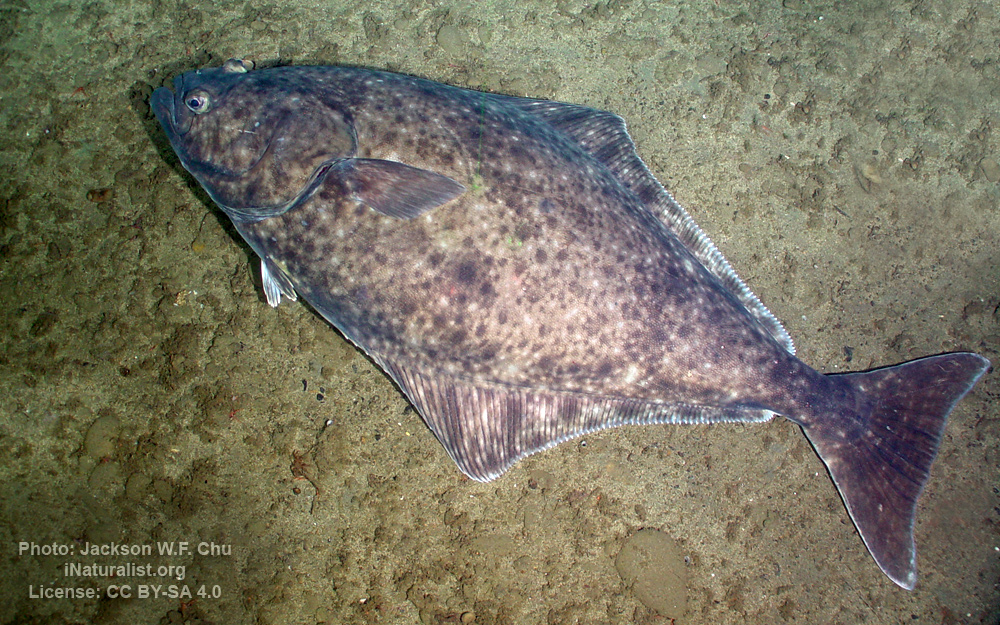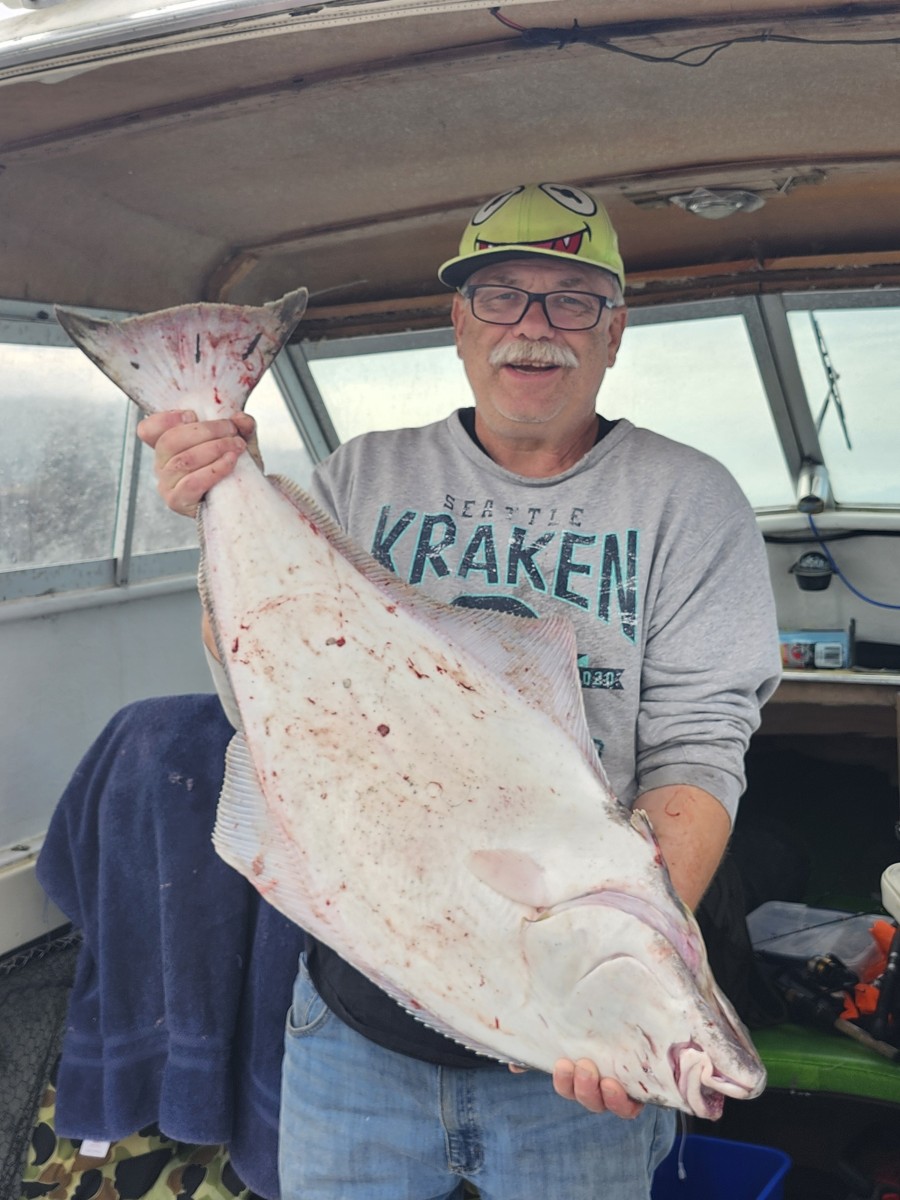Pacific halibut
(Hippoglossus stenolepis)

Image source: Jackson W.F. Chu | inaturalist.org
Classification
General data
Pacific halibut is a species of righteye flounder.
The Pacific halibut is found on the continental shelf of the North Pacific Ocean and Bering Sea. Fishing for the Pacific halibut is mostly concentrated in the Gulf of Alaska and the Bering Sea, off the west coast of Canada. Small halibut catches are reported in coastal Washington, Oregon, and California.
Halibut are demersal, living on or near the bottom of the water and prefer water temperatures ranging from 3 to 8 °C (37.4 to 46.4 °F).
From November to March, mature halibut concentrate annually on spawning grounds along the edge of the continental shelf at depths from 183 to 457 m (600 to 1,500 ft).
Halibut are strong swimmers and are able to migrate long distances. Halibut of all ages and sizes are involved in a predominantly clockwise (northwest to southeast) migration from their settlement areas (western part of the Gulf of Alaska and Bering Sea), and reproductive fish also make regular seasonal migrations from more shallow feeding grounds in summer to deeper spawning grounds in winter.
Pacific halibut have diamond-shaped bodies. They are more elongated than most flatfishes, their width being about one-third of their length. They have a high arch in the lateral line over the pectoral fin, and a lunate, or crescent-shaped tail, which is different from other flatfishes. Small scales are embedded in the skin. Halibut have both eyes on their dark upper sides. The color on the dark side varies, but tends to assume the coloration of the ocean bottom. The underside is lighter, appearing more like the sky from below. This color adaptation allows halibut to avoid detection by both prey and predator.
They are one of the largest flatfish (only surpassed by the closely related Atlantic halibut), and can weigh up to 500 lb (230 kg) and grow to over 8 ft (2.4 m) long.
Being strong swimmers, halibut are able to eat a large variety of fishes, including cod, turbot, and pollock, and some invertebrates, such as octopus, crab, and shrimp. Sometimes, halibut leave the ocean bottom to feed on pelagic fish, such as salmon, sand lance, and herring, and even seal remains have been found in their stomachs.












